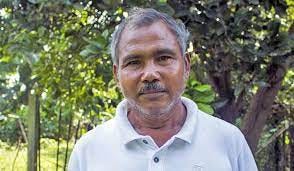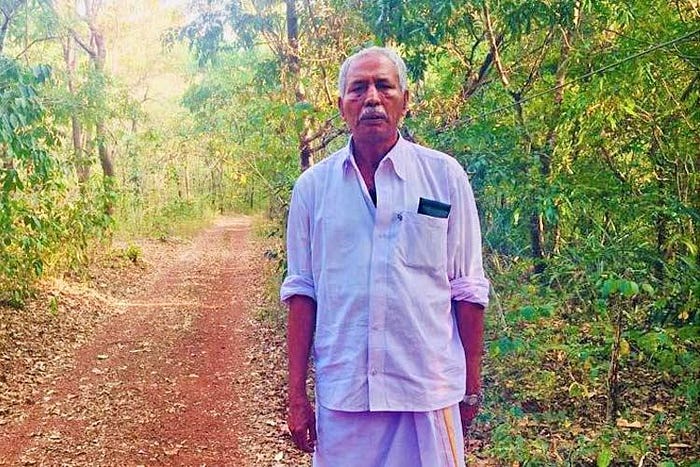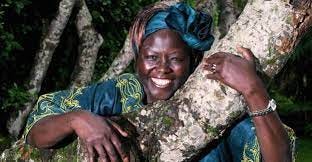Nature has healing power. It’s time to start planting trees and gardens.

Humans have pushed Earth to the brink of ecological collapse. But people can also help Nature heal. Some individuals have made truly beautiful changes in the world. They created near-miracles by allying themselves with trees.
I focus in this story on two amazing planters from India, but there are many more around the world. Working individually or in groups, they have reclaimed huge areas of Earth from the growing toxic desert we are making of it.
Planting a forest

When Jadav Payeng was sixteen years old, he was walking on a 1,300 acre sandbar in the Brahmaputra River, near his home in the Assam District. A flood had washed dozens of snakes onto the island, where they died.
“The snakes died in the heat, without any tree cover,” Payeng told the Times of India in 2012. “I sat down and wept over their lifeless forms. I alerted the forest department and asked them if they could grow trees there. They said nothing would grow there. Instead, they asked me to try growing bamboo. There was nobody to help me. Nobody was interested.”
Payeng stopped going to school and moved on to the island. He watered and tended the bamboo, read about and did everything he could to improve the soil, including bringing ants in a bag from his home village. Then he started planting trees. He has kept it up for 30 years.
The island is now a beautiful forest. Animals have returned, including rhinos, birds, deer and Bengal tigers. Payeng raises a few cows there and supports his family and his forestry by selling their milk in the city.
Has this been a worthwhile way to spend his life? Payeng apparently thinks so, because at age 47, he has found another 1,300 acre island and plans to do it again.
The more I think about this story, the more awed I become. It started with compassion for dead snakes. How many people would care that much?
There must have been times he wondered “What am I doing here?” Trees failed. Life on the island could be lonely. But he did what he felt called to do. He has changed his corner of the world in a beautiful way, and in the interviews I read, he sounds happy and at peace. He is poor, but he is not a hermit. He has family and friends. He looks healthy. He gives TED talks and wins awards. He has been appointed by the Mexican government to spend three months a year growing forests in Mexico and teaching youth how to grow them.
Bringing life
In Kerala State, a travel agent named Abdul Karim brought water and fertility back to several villages by re-growing a forest on barren hills. He started in 1997, putting down his life savings to buy 5 acres of desert. Landowners thought he was a fool for envisioning a forest on land they considered useless.

But it was his dream to bring back the “Kaavu,” the sacred groves that all Indian villages had long ago. Karim had never seen one, but says he had been told of them as a child. “I think I had subconsciously yearned for one,” he says. Eventually, he bought 32 acres.
According to the magazine Good News India, Karim started planting saplings in whatever cracks he could find between rocks. People in the forestry department said he was mad. His own extended family members called the plan “stupid.”
For the first three or four years, he had to bring in water by motorbike, before and after his work as a travel agent. Trees kept dying in the dry heat, and he kept trying. After three years, he had little to show for it but a few small saplings. He was close to giving up.
Then God and Nature sent him a sign. There was an abandoned well on his property that gave about 5 liters of water, then needed long hours to recharge to even that pitiful level.
“One day, after three or four years, I noticed the water level in the well starting to rise,” he says. “I took that as a sign and started planting everywhere I could find.” There was still nothing a passerby could see for all Karim’s efforts, but he knew he was on the right track.
Now the trees he planted have turned his hill into a forest sponge that provides water for surrounding farms in a 10 kilometer radius. All manner of animals and plants have returned, including some valuable medicinal herbs. Nearby villages have come back to life.
It has taken 25 years. Most of the profits of his travel business have gone into his forest, but he told Friday Magazine of the United Arab Emirates that he believes it has all been worth it. Scientists come to study his forest; eco-tourists to enjoy it. He gets to speak at ecology conferences around the world. The government is looking at ways to replicate his forest on other barren hillsides, of which India has many.
He lives in a small house in his forest with his wife and two of his children and can’t imagine relocating. “I wanted to leave behind something that I had created for the next generation,” he says. “For sanity and generosity of spirit, we should be able to witness nature at its unceasing, rejuvenating work.”
What Does This Mean to Us?
Are people like Karim and Payeng superhuman? Or do their examples apply to us too? We aren’t all called to plant forests, but we can all do something. So, there are things we can learn from these forestry stories.
● Good things take time. If Jadav Payeng had spent a year on his sandbar and then gone home, it might have done some good. But as he stayed on, the results grew exponentially.
● Appreciate small successes, like Abdul Karim did when water came back into his well.
● There may be a learning curve. You can’t just throw seeds out the window or plant a seedling and come back 20 years later to find a tree. You have to learn to plant them, then keep giving them care. Whatever we do, we can’t expect to be great at it from the start. We learn, we grow, we watch YouTube how-to videos, we get better, and our results improve over time.
● Enjoy the process. I’m pretty sure Karim and Payeng didn’t wake up in the morning dreading going to the forest to work for a miserable boss. They didn’t have a boss. Many people find planting things and helping them grow a source of pleasure and satisfaction. I think almost anyone will be better off if they spend time working with Nature.
● Small things count. If you can’t plant a forest, can you plant one tree? Can you plant a regenerative garden for food? If you can’t end world hunger, can you help one other person eat? If you can’t write an inspiring book, can you write letters to old people or shut-ins, or write letters to the editor to share your ideas?
● To give, you must take care of yourself. Payeng and Karim both live in their forests and are comfortable. They didn’t wear themselves out; they worked at a steady pace — one tree at a time — they could manage.
Many times we feel our cause or project is so important we have to give ourselves to it completely. This doesn’t work for long. We need rest; we need food. We need to enjoy life. Otherwise we get sick, burn out, or die.
● Don’t let others dictate to you — Payeng and Karim both had families and friends telling them they were wasting their time. A more famous forester, Wangari Maathai of Kenya, actually went to jail several times for planting trees in opposition to government development projects. She became the first African woman to win a Nobel Peace Prize.

Time to start planting
With the endless series of heat waves, fires, droughts, and floods, our animal and plant relatives are dying in huge numbers. Forests and farmlands are turning to deserts. Scientists predict human civilization cannot survive on this path. But we and the trees can do something about it.
As Jadav Payeng and Abdul Karim have shown, the more you keep planting, and caring for the shoots you’ve planted, the more beautiful your forest becomes. When larger groups of people work together or governments promote restoration, 10,000 square-mile ecosystems can be brought back, like in these regions of China and Rwanda.
Nature can do amazing things if we help it. If you’re one person acting alone or part of a massive program, it all helps. I hope we rise to the occasion.
— — — — — — — —
Thanks for reading! Please comment, share, or steal. Follow me on Twitter, on Facebook or Medium.com. Hire me for freelancing, editing, or tutoring on Linked In
